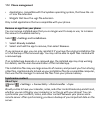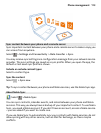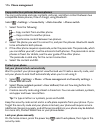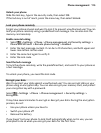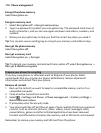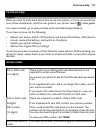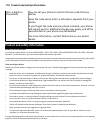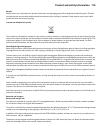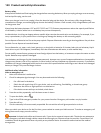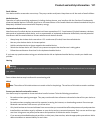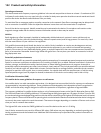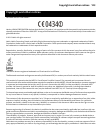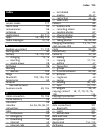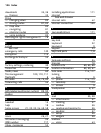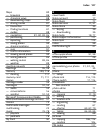
Battery safety
Always switch the device off and unplug the charger before removing the battery. When you unplug a charger or an accessory,
hold and pull the plug, not the cord.
When your charger is not in use, unplug it from the electrical plug and the device. Do not leave a fully charged battery
connected to a charger, as overcharging may shorten the battery’s lifetime. If left unused, a fully charged battery will lose
its charge over time.
Always keep the battery between 15°C and 25°C (59°F and 77°F). Extreme temperatures reduce the capacity and lifetime
of the battery. A device with a hot or cold battery may not work temporarily.
Accidental short-circuiting can happen when a metallic object touches the metal strips on the battery, for example, if you
carry a spare battery in your pocket. Short-circuiting may damage the battery or the connecting object.
Do not dispose of batteries in a fire as they may explode. Dispose of batteries according to local regulations. Recycle when
possible. Do not dispose as household waste.
Do not dismantle, cut, open, crush, bend, puncture, or shred cells or batteries. If a battery leaks, do not let battery liquid
touch skin or eyes. If this happens, immediately flush the affected areas with water, or seek medical help.
Do not modify, remanufacture, attempt to insert foreign objects into the battery, or immerse or expose it to water or other
liquids. Batteries may explode if damaged.
Use the battery and charger for their intended purposes only. Improper use, or use of unapproved batteries or incompatible
chargers may present a risk of fire, explosion, or other hazard, and may invalidate any approval or warranty. If you believe
the battery or charger is damaged, take it to a service centre for inspection before continuing to use it. Never use a damaged
battery or charger. Only use the charger indoors.
Additional safety information
Make an emergency call
1 Make sure the device is switched on.
2 Check for adequate signal strength. You may also need to do the following:
• Put a SIM card in the device.
• Switch the call restrictions off in your device, such as call barring, fixed dialling, or closed user group.
• Make sure the offline or flight profile is not switched on.
• If the device screen and keys are locked, unlock them.
3 Press the end key repeatedly, until the home screen is shown.
4 To open the dialler, select
.
5 Type in the official emergency number for your present location. Emergency call numbers vary by location.
6 Press the call key.
7 Give the necessary info as accurately as possible. Do not end the call until given permission to do so.
When you switch your device on for the first time, you are asked to create your Nokia account. To make an emergency call
during the account setup, press the call key.
Important: Activate both cellular and internet calls, if your device supports internet calls. The device may attempt to
make emergency calls both through cellular networks and through your internet call service provider. Connections in all
conditions cannot be guaranteed. Never rely solely on any wireless device for essential communications like medical
emergencies.
120 Product and safety information



